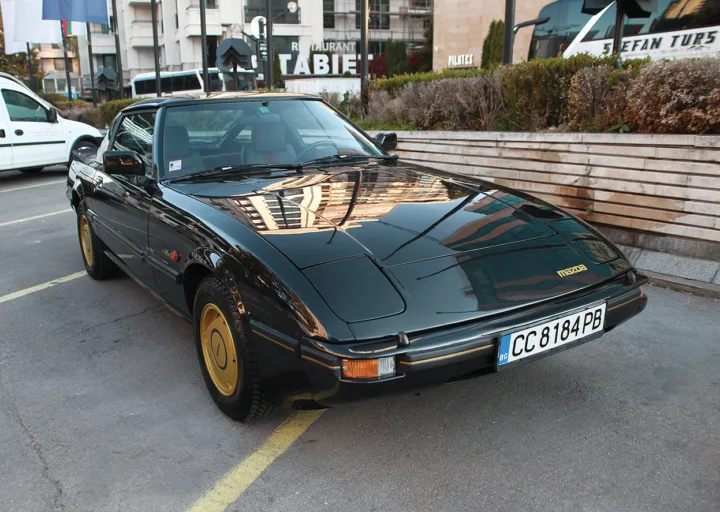Mazda RX-7: the extreme rotor
When the Mazda RX-7 debuted on the sports car market in the late 1970s, it was met with some skepticism and mistrust from American and Western European experts. The model was heavily criticized, especially for its design, which journalists said was a copy of the Porsche 924 at the front and the TVR at the rear aripa van wezel pret fata spate stanga si dreapta.

The truth is that these parallels are a bit exaggerated – in reality, the RX-7 has all the credentials of a purebred sports car combined with complex, highly efficient mechanics, a remarkable acceleration from 0 to 100 km/h in just 8.7 seconds, an extremely sporty silhouette, a clear and functional dashboard configuration, as well as two very comfortable seats resembling those of a rally car. This is a combination of high technical qualities that would intrigue any true car enthusiast, regardless of the price.
Soon after the RX-7 premiere, the world press became much more favorable and covered the debut of the new contender in the sports class in a fitting manner, and in 1978 the prestigious American magazine Road & Track even included it in its ranking of “10 Cars That Changed the World”. In January of the following year, Road Test Magazine declared it “The Most Incredible Sports Car of 1979”, and the readers of Car and Driver defined it as “The Most Significant Imported Car of 1979”.
A great testament to the Mazda RX-7's capabilities was its brilliant performance in the 1979 Daytona 24 Hours. Of the 68 cars that started, 46 were eliminated, with the top two places in the GTU (Grand Touring under 2.5L) class being taken by two factory-tuned versions of the RX-7 - a truly brilliant start for the model. In 1981, the RX-7 was named the best-selling imported car in the United States by Motor Trend.
The Mazda RX-7 was produced from 1978 to 2002. It was initially equipped with a lightweight and compact twin-rotor engine with a displacement of 1,146 cc, positioned directly behind the front axle. It was also the first car from the Japanese company to have headlights hidden under covers, as well as the only Japanese car from the 1970s and early 1980s with such headlights (the exception being the short-lived Toyota 2000 GT). It was available as a two-seater coupe with the option of adding rear seats on an individual order. A total of 811,634 copies were produced throughout the model's history.
The second series of the RX-7, produced from 1981 to 1983 (to which the car shown in the photos belongs), is distinguished in appearance by thicker rubber strips on the bumpers and side parts of the body, as well as wider taillights and a slightly modified rear end. The model is 61 kg lighter than the first version, the fuel tank is larger, the dashboard is also modernized, and the gear lever is now smaller and placed closer to the driver.
In 1981, the standard four-speed manual transmission on all versions was replaced by a 5-speed, and power was increased to 115 hp.
- 2025-04-06 - No British cars for Americans!
- 2025-04-04 - Schumacher's legendary Ferrari up for sale at Monaco Grand Prix
- 2025-04-03 - Renault Austral gets driver facial recognition system
- 2025-04-02 - Jeep Avenger 4xe also masters off-road
- 2025-04-01 - See what the updated Mercedes-Benz GLE will look like (VIDEO)
- 2025-03-31 - Half a ton of the new Opel Grandland is made from recycled materials
- 2025-03-29 - 7th place for Nikola Tsolov on the last day of testing in Bahrain
- 2025-03-28 - Busy test schedule for Nikola Tsolov in Bahrain
- 2025-03-27 - With hubs in the wheels: the revolutionary drive of future BMW and VW electric cars
- 2025-03-26 - Luxury sedan with V8 biturbo engine and very low mileage












